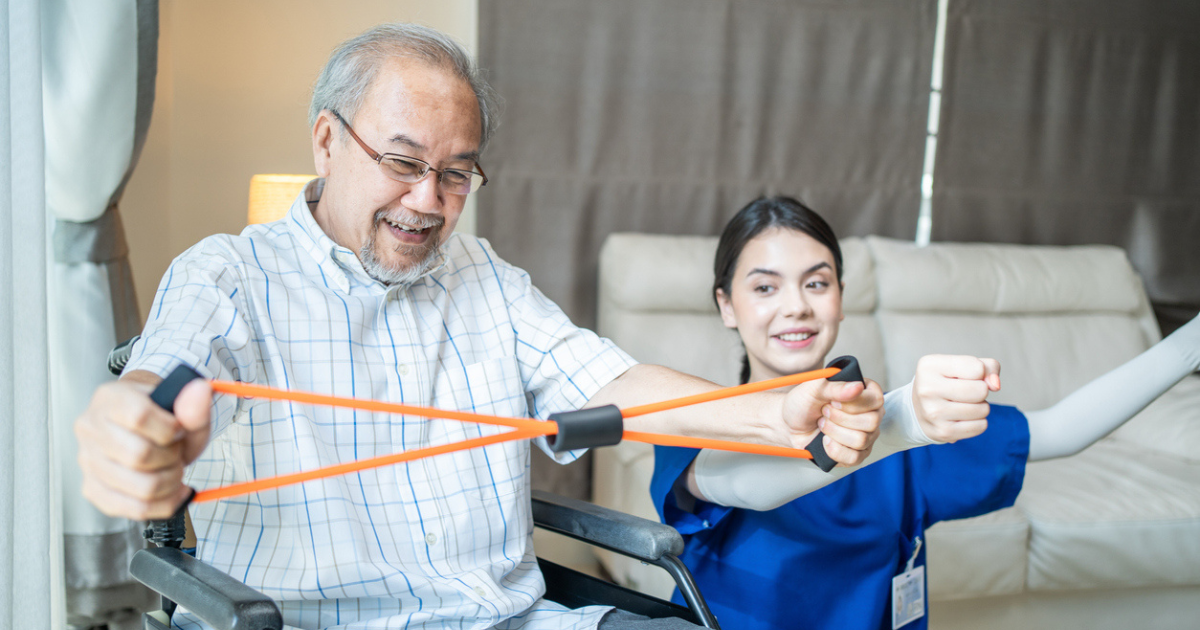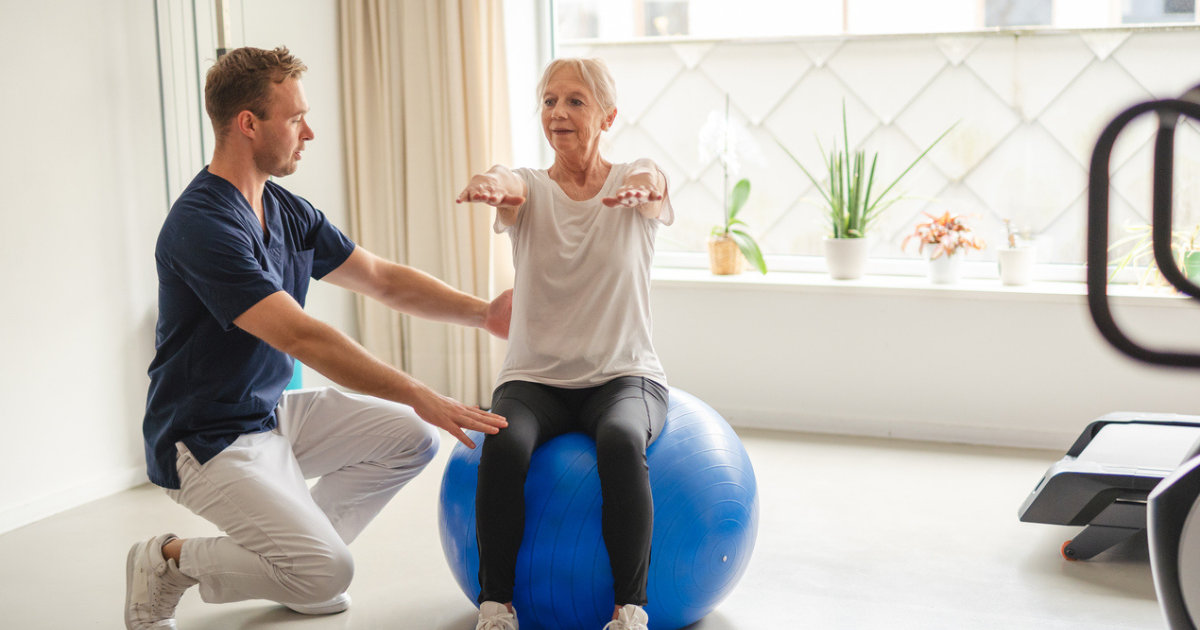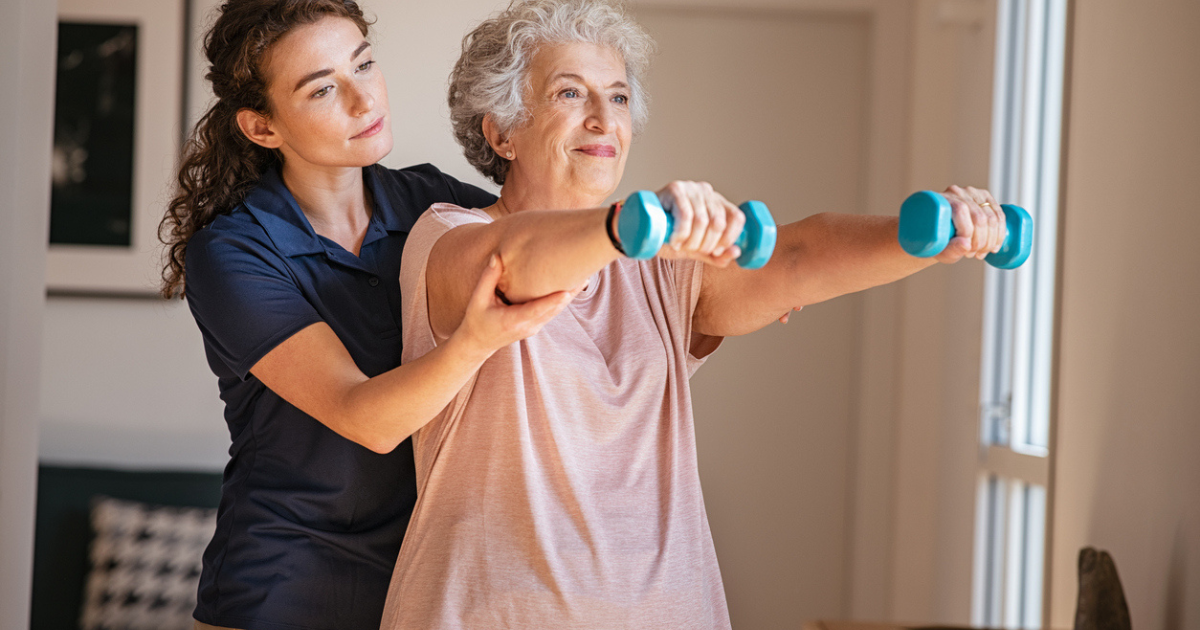
Falls are a leading cause of injury among older adults, with one in four seniors over the age of 65 experiencing a fall each year. The consequences of these falls can be devastating, leading to serious injuries such as fractures, head trauma, and a decline in overall quality of life. Beyond the physical impact, the fear of falling often leads to decreased mobility, social isolation, and a loss of independence.
However, there is hope in the form of physical therapy. Physical therapy helps prevent falls by addressing the underlying physical factors contributing to them and empowers older adults to maintain their independence and confidence.
Common Causes of Falls in Seniors
Several factors cause an increased risk of falls among the elderly.
- Balance issues and muscle weakness are primary physical contributors, often exacerbated by conditions such as arthritis or Parkinson's disease.
- Vision impairments and the use of multiple medications can further complicate balance and coordination.
- Environmental hazards – like poor lighting, slippery floors, and cluttered pathways – are prevalent home risks.
Addressing these causes is imperative in reducing fall risk. Safety measures like improving home lighting, securing loose rugs, and providing physical therapy to boost strength and balance are essential in safeguarding against falls.
How Physical Therapy Can Help
Physical therapy is important for maintaining health and independence. By addressing critical physical health factors, physical therapy helps prevent the risk of falls for the elderly.
Strengthening Exercises
Targeted exercises are essential in building muscle strength, which is vital for supporting body weight and improving movement stability.
For example, with a Keystone Health in-home physical therapist, you may focus on leg lifts, squats, and resistance training to increase your muscle power. These exercises increase strength and boost confidence in movement, reducing the fear of falls.
Balance and Coordination Training
Balance exercises are fundamental in preventing falls. Activities like single-leg stands, tandem walking, and balance beam exercises are incorporated into therapy sessions to improve coordination and stability.
Focusing on these exercises can help you better react to everyday movements and obstacles, significantly lowering your risk of falling.
Gait Analysis and Training
Gait analysis is integral to physical therapy, where therapists assess and improve walking patterns. For instance, our in-home physical therapists can identify irregularities by evaluating your walking patterns and design interventions for safer, more efficient movement.
Proper footwear and assistive devices (such as canes or walkers) are often recommended to support safe mobility and reduce fall risks.
Flexibility and Range of Motion Exercises
Improving flexibility is key to increasing overall movement and preventing falls. Stretching and range of motion exercises help you maintain or regain mobility to move easily and respond better to potential balance disruptions.
This improved flexibility aids in daily activities and minimizes the chance of accidents.
Vestibular Rehabilitation
Vestibular rehabilitation offers a practical solution for those experiencing dizziness or balance issues related to inner ear problems. This specialized therapy focuses on stabilizing vision and improving balance through exercises that retrain your body’s response to dizziness.
By addressing these specific issues, you can regain balance control and confidence, greatly reducing the likelihood of falls.

Personalized Fall Prevention Plans
Each senior's physical condition, medical history, and living environment play a role in crafting an effective fall prevention strategy. Individualized assessments allow physical therapists to understand these factors in detail so the interventions are effective, safe, and suitable for your specific requirements.
Tailored Exercises and Interventions
Physical therapists develop tailored exercise programs and interventions based on comprehensive assessments. These programs target strength, balance, coordination, and flexibility.
By focusing on your unique challenges and capabilities, therapists can create exercises that maximize improvement while minimizing the risk of injury. Whether through targeted strength-building routines or balance-enhancing exercises, our in-home physical therapist aims to empower you with greater mobility and confidence.
Ongoing Assessment and Adjustment
Continued assessment guarantees ongoing effectiveness as you progress through your therapy plans. Physical therapists regularly evaluate the success of the interventions and make necessary adjustments to the plan.
This dynamic approach allows for incorporating new exercises as you improve or your needs change.
Additional Benefits of Physical Therapy for Older Adults
Physical therapy offers numerous advantages beyond fall prevention, significantly improving overall well-being.
Increasing Overall Mobility and Independence
Physical therapy is pivotal in improving your mobility, allowing you to move more freely and perform everyday tasks more easily. This improvement in mobility translates into a more active lifestyle, enabling you to participate in social activities, household chores, and hobbies you enjoy.
Physical therapy helps you maintain or regain independence by focusing on exercises that enhance strength, balance, and flexibility.
Building Confidence and Reducing the Fear of Falling
One of the key psychological benefits of physical therapy is its ability to build confidence. A major concern for many elderly individuals is the fear of falling, which can lead to reduced activity levels and increased isolation.
You gain strength and balance through personalized therapy plans, reducing your fear of falling. The confidence gained from improved physical capability encourages you to engage more in your surroundings and maintain an active social life.
Implementing Fall Prevention Strategies at Home
A safe home environment is essential to prevent falls and safeguard your well-being.
Creating a Safe Home Environment
Regular home safety assessments help identify potential risks and allow for timely modifications.
- Begin by removing tripping hazards such as loose rugs, electrical cords, and clutter from walkways.
- Improving lighting throughout the home is equally important; check that hallways, staircases, and frequently used rooms are well-lit to boost visibility.
- Installing grab bars in the bathroom and handrails on the stairs can provide additional support and stability.
For a more detailed breakdown on home safety, read Aging in Place: A Room-by-Room Guide to Preparing Your Home.
Encouraging Regular Physical Activity
Staying active is key to maintaining strength and balance, which is vital for fall prevention.
Walking, tai chi, and water aerobics are excellent options that can be tailored to individual abilities and preferences. These activities complement physical therapy and contribute to improved cardiovascular health and mental well-being.
Consistent exercise fosters a sense of accomplishment and independence, empowering you to lead a more active and fulfilling life. Read Elderly Wellness Programs in Idaho for programs to help with your overall wellness!

When to Seek Physical Therapy
Recognizing when to seek physical therapy is important in preventing falls and maintaining your health and independence.
Several indicators suggest it is time to consider physical therapy for fall prevention.
- If you have experienced recent falls, near-falls, or unsteadiness while walking, these are strong signs that professional intervention would be beneficial.
- If you experience difficulty with daily activities due to decreased strength, balance, or coordination, physical therapy will provide targeted support to address these challenges.
- Other signs include noticeable changes in gait, increased fatigue during regular tasks, or a growing fear of falling, which can lead to reduced activity and social withdrawal.
How to Talk to a Healthcare Provider About Fall Prevention and Physical Therapy
Start by expressing concerns about changes in mobility or recent falls and ask for a comprehensive evaluation to assess the risk factors.
Preparing a list of questions or concerns ensures all care aspects are addressed during the consultation. Healthcare providers can help you understand the available options and refer you to a qualified physical therapist who can tailor a program to meet your needs.
At Keystone Health, we specialize in providing compassionate, in-home physical therapy services for seniors. Our experienced therapists work closely with you and your healthcare provider to develop a personalized plan that addresses your specific challenges and helps reduce your risk of falling.
With our convenient in-home care, you can receive the therapy you need in the comfort of your home, making it easier to stay consistent with your treatment and achieve the best possible outcomes.
For more information, read Physical Therapy for Seniors: Frequently Asked Questions.
The Power of Physical Therapy in Preventing Falls
Incorporating physical therapy into your fall prevention strategy is one of the most effective ways to reduce the risk of falls and maintain a high quality of life. Do not let the fear of falling hold you back – take proactive steps today to secure your independence and well-being.
If you or a loved one are concerned about falling, contact Keystone Health today to learn more about our specialized in-home physical therapy services. We are here to help you live safely and confidently in your home.
